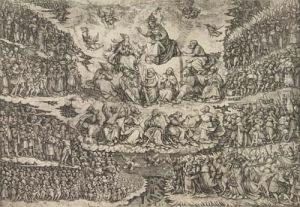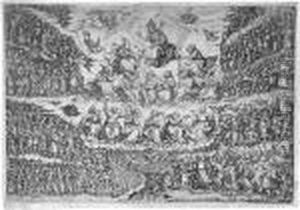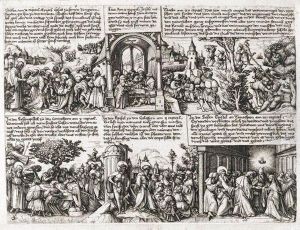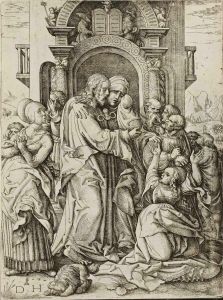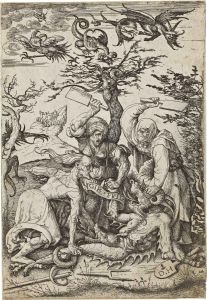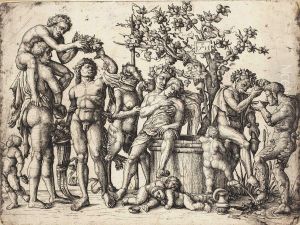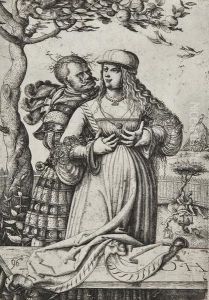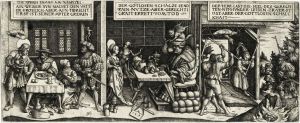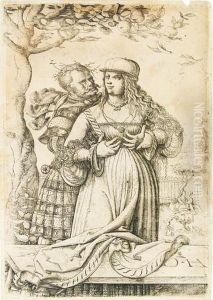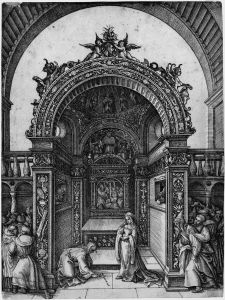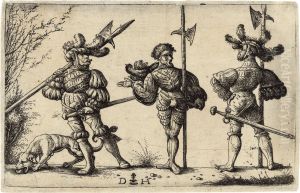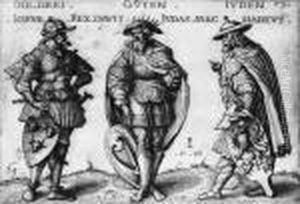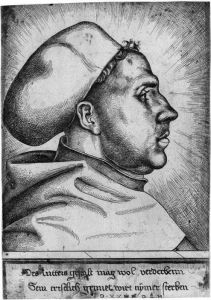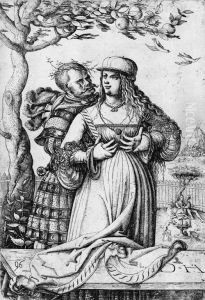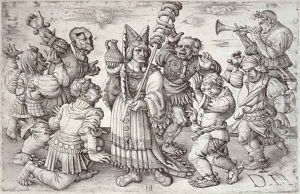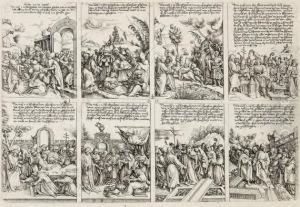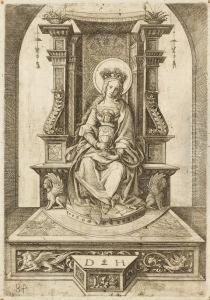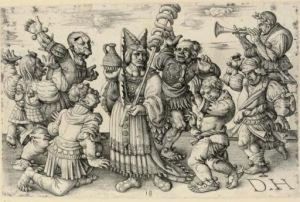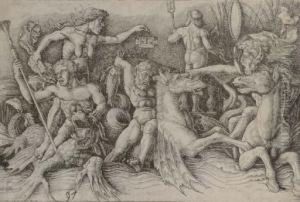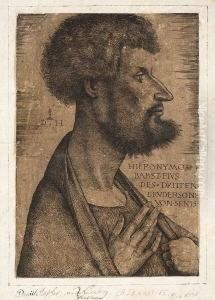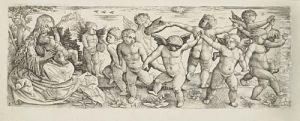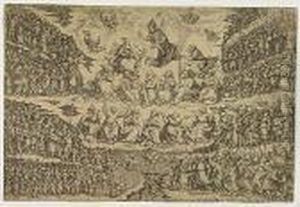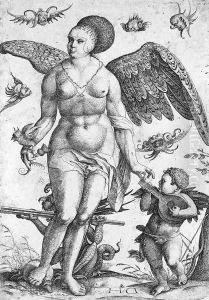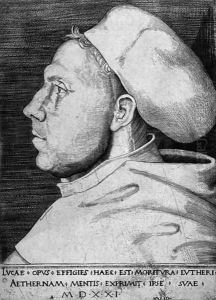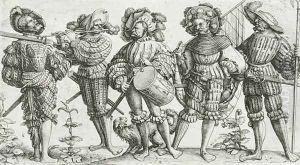Daniel Hopfer Paintings
Daniel Hopfer was a German artist who is often credited with being one of the originators of etching in printmaking. Born in 1470 in Kaufbeuren, Bavaria, Hopfer started his career as an armourer, decorating armor with intricate designs using etching techniques, which at the time were innovative methods for applying decorative patterns onto metal surfaces.
His transition from armor decoration to printmaking marked a significant development in the art world. Hopfer adapted the etching process to create prints on paper, a practice that was not common before his time. This involved coating a metal plate with a waxy substance, then drawing through the substance to expose the metal. The plate was then dipped in acid, which etched the exposed lines into the plate. Ink would be applied to the etched plate, and then it was used to make prints on paper.
Hopfer’s etchings were characterized by their detailed and intricate designs, often featuring religious and mythological scenes, as well as landscapes and ornamental patterns. He was also known for his sense of humor and satire, which was reflected in some of his prints that commented on contemporary society and human follies.
Although Hopfer did not produce a large body of work, his influence on the development of etching was profound. He opened up new possibilities for printmakers and artists, contributing to the spread of etching as a popular form of art production throughout Europe.
Daniel Hopfer died in 1536 in Augsburg. His legacy continued through his family, as his sons Hieronymus and Lambert were also accomplished artists who carried on his printmaking tradition. Today, Daniel Hopfer is remembered not only for his own artworks but also for his role in pioneering the technique of etching, which would become a fundamental tool for artists in the centuries to follow.
